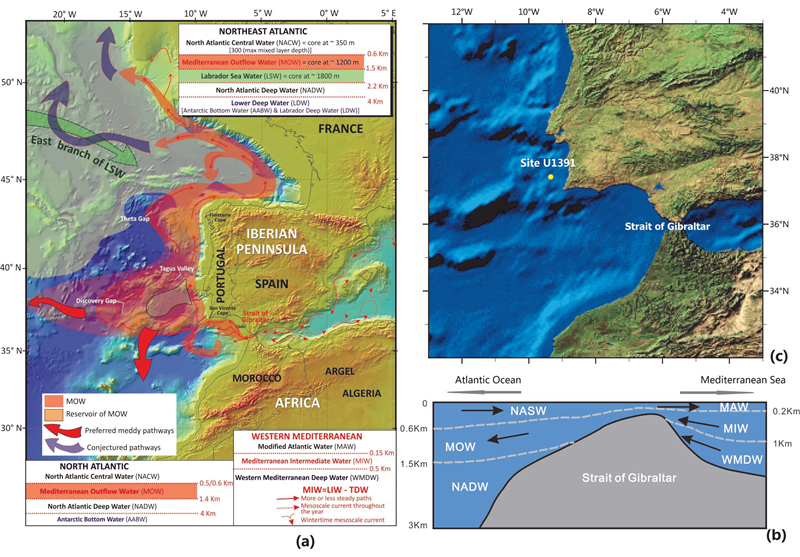
Location map of Site U1391, and distribution of main ocean water masses in the northeastern Atlantic and western Mediterranean Sea
After the Strait of Gibraltar re-opened at 5.33 million years ago, warm high-salinity Mediterranean outflow water (MOW) showered into the Gulf of Cadiz, north Atlantic, penetrating north along the Portuguese slope, even to the Norwegian- Greenland Sea region, which enhances the North Atlantic deep water density and helps drive Atlantic Meridional Overturning Circulation (AMOC). Due to the stronger current in the west Iberian margin, most study were limited to the last glacial- interglacial periods before the long term continuous sediments retrieved from the IODP339 cruise during November, 2011-January, 2012.
As part of the post cruise scientific research, this study, supported by National Natural Science Foundation of China, Chinese Academy of Sciences and IODP-China, and lead by Prof. LI Baohua from Nanjing Institute of Geology and Palaeontology, Chinese Academy of Sciences, performed large amount of micropaleontological work on core sediments from Site U1391 off the Portuguese margin. Quantitative benthic foraminifera, detailed stable isotope of both planktonic and benthic foraminiferal shells, and Mg/Ca ratios of benthic foraminiferal shells were used to reconstruct the long-term variation of Mediterranean outflow water with continuous record for the first time.
Benthic foraminiferal faunal data from Site U1391 disclose the bottom water property over the last ~0.9 Ma. Variations of the index species or assemblages, such as Planulina ariminensis and the “elevated epibenthos” group suggest that the MOW intensity has typical glacial-interglacial cycles, an active MOW current during the interglacial periods and a sluggish MOW current during the glacial periods. Over the last ~0.9 Ma, the strength of MOW reached its peak at MIS 11, when the sea level was considered to rise up to ~20 m above the present high-stand, which confirms the influence of climate on the MOW current by waving the sea level stands.
The above results was recently published in Global and Planetary Change:
Download:
